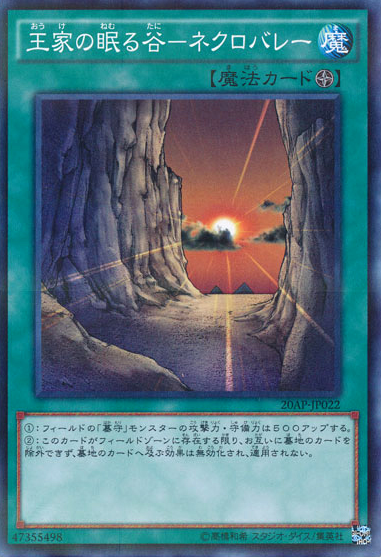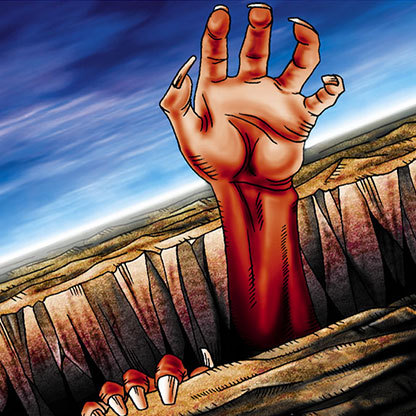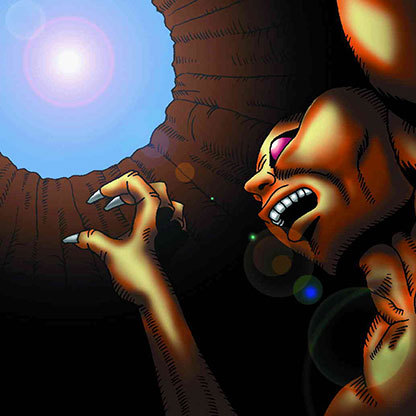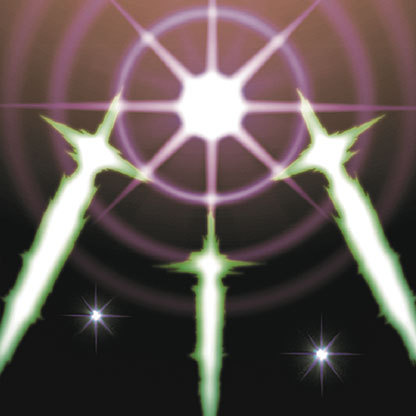CHANGING THE TEXT!!! - Yu-Gi-Oh! Official Card Game Official Guide Starter Book! (Part 3)
(Part 1 can be found here. Part 2 can be found here.)
When we last left off, the Expert Rules were discussed and what changes came to the game. Today, we'll finish discussing the Official Guide Starter Book by talking about the last update to "Yu-Gi-Oh!".
Do cards always stay the same? Once a card is printed, will it always be written in the same way from that point on? The answer to that question is no. Not every card will stay the same from printing. Over time and for various reasons, a card's text can be altered or changed entirely. This is called an ERRATA「エラッタ」. It's not important right now to go into all of the ways a card can receive an errata. What IS important is knowing that cards can be changed from what they were before.
Within the Official Guide Starter Book, three cards would become the first to be changed in the game's history. These erratas made minor changes that mostly altered how these cards worked or clarified what was intended from the start. One of these cards was made by Mr. Takahashi and used in the manga, but the other two were KONAMI creations. We'll start with the KONAMI creations first.
地 割 れ
ORIGINAL:
TRANSLATION: Of the monsters on the opponent's field, destroy the one with the lowest Attack Power.
NEW:
TRANSLATION: Of the monsters on the opponent's field, destroy the one among the face-up monsters with the lowest Attack Power.
Fissure didn't clarify whether a monster needed to be face-up or not. As the Rulebook didn't specify whether a face-down monster had Attack or Defense Power, one could read the original effect to mean even face-down monsters could be destroyed by Fissure. Fissure was weakened a little bit due to this clarification. However, it would remain a powerful card through the majority of Series 1.
落 とし穴
ORIGINAL: に、のモンスターをた
TRANSLATION: When a monster with 1000 or more Attack Power is Summoned to your opponent's field, destroy "Trap Hole" and that 1 monster.
NEW:
TRANSLATION: If the Attack Power of a monster placed face up on the field by your opponent is 1000 or more, you can destroy "Trap Hole" and that 1 monster.
The sister card to "Fissure" was the most extensively changed of the three in phrasing. "Yu-Gi-Oh!" in early Series 1 did not use the term Summon to designate a monster's appearance on the field. Thus the use of placing a card instead. That could be either placing it from the hand or turning it face-up on the field. The latter couldn't be done beforehand because a card that's flipped face-up wasn't considered a Summon in OCG Series 1.
光 の護 封 剣
ORIGINAL:
TRANSLATION: All of the enemy monsters cannot attack for 3 turns. Monsters that are reversed are turned visible when used.
NEW:
TRANSLATION: All of the enemy monsters cannot attack for 3 turns. Enemy monsters that are face down are turned face up when used.
This card shall be the most extensively altered of any Series 1 release by the end. However, this first changes are mostly wording changes and a small clarification. Before, it didn't clarify whether all monsters on the field were flipped face up or it was just the opponent. KONAMI would also add extra kanji to clarify terminology.
CONCLUSION:
The first erratas in the game's history were relatively minor. Simple clarifications of Fissure and Swords of Revealing Light as well as a buff to Trap Hole didn't drastically change how the game would be played from this point forward. But it did make clear that cards could be changed in the future if KONAMI deemed it necessary.
With this completed, the stage was now set for the game to continue on. There were no releases that corresponded with the Starter Book though. The game went forward with Vol 2. as the latest release. How would things change? We'll take a look at that next time.





Comments
Post a Comment